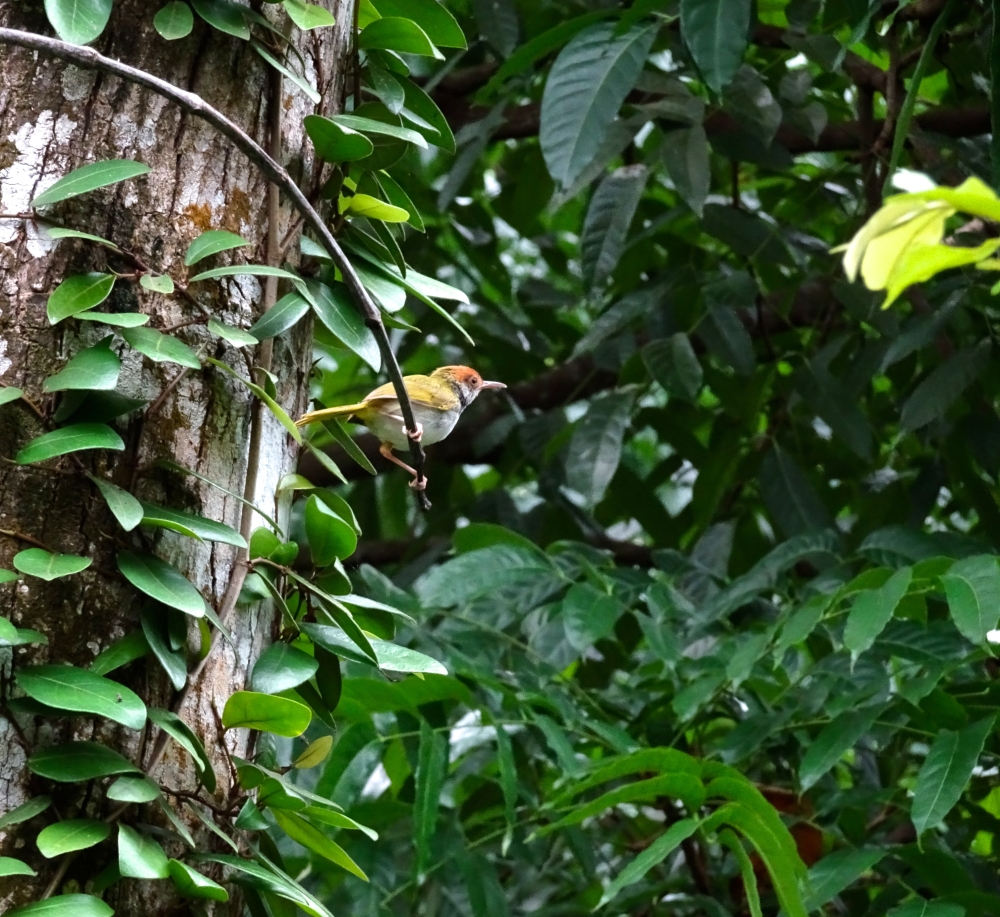(Into the Jungle: Part I | Part II | Gallery)
A walk in the rainforest with conservationist Irshad is a treat, one that is most eye-opening and entertaining. It’s impossible not to grow a greater appreciation for nature after such a tour, and you’ll understand why he’s also known as the ‘Jungle Man’.

Each walk is different as you can hardly predict what you’ll come across (except the plants; I don’t suppose they move a lot). Whenever we heard a bird cry, he’d stop, listen and sometimes he’d be able to spot the bird and tell us a story or two. And these stories are the reason why some guests come back to join his tours again and again; for it doesn’t matter whether you are a kid or grown-up, whether the story is about a tree, a squirrel, a bird or himself, his storytelling never fails to fascinate.
Dancing in the Air

One of such stories – also my favorite one – is the courtship flight of the white-bellied sea eagle. These impressive birds of prey are monogamous, which means they mate for life. We happened to have a glimpse of the pair that lives at The Datai one evening, as Irshad told us the romantic history of the couple who decided to move in 14 Novembers ago.
“Like all male white-bellied sea eagles, he had to first establish his territory by fighting off all other eagles. When she flew into his kingdom, he took off to chase after her, and a beautiful dance in the air began,” he said, smiling. “Of course, she wasn’t easy to get (winks) and so she would fly away, perhaps to test his flying skills. But at the end she’d accepted him, and she flipped around, while he was above her, and they locked talons and went whirling toward the ground. Before they hit the ground though, they let go and this time, she didn’t fly away. Instead, side by side they flew into the sunset and lived happily ever after… Actually they went back to his nest and have been living together ever since.”
Everyone had a smile on their face and I could almost see the eagles’ waltz before my eyes. So I made a note to look for footages on Youtube later, but I could only find the courtship flights of the golden eagle and the bald eagle, which I imagine are similar:
This cartwheeling ritual happens not only during courtship, but also when eagles fight each other. Except that this fighting “dance” is fierce and the first one to let go is the loser and must retreat, though this can repeat a few times before the fight is over. Here’s another footage:
Team Work
The best time for birdwatching and photography is usually early in the morning, when birds are active and there’s sufficient sunlight. If you don’t intend to photograph these colourful beauties, I figured sunset might be a good time too, since that’s when diurnal birds go back to their nests. That was also when we spotted a few greater racket-tailed drongoes (or was it the same one? I couldn’t tell at all, but Irshad might know!).

These elegant blue birds are often seen following macaque monkeys around, Irshad explains: “The monkeys stir up insects – food for the drongoes – when they jump around, so the birds can snatch them, easy and fast meals.”
“Why are their tails like that?” asked a little kid, pointing at a picture of the drongo in the book Irshad was holding. The bird has two long, thin tail feathers which spread at the tip to form two “rackets”.
“You know when the insects are stirred up they’d soon begin to fall because of gravity, so the drongo’s tail comes in handy to act like a racket,” he says, illustrating the action with his hand, “to whoosh them back up so it can eat them.”

But the greater racket-tailed drongoes aren’t the only ones benefiting; in return the monkeys, especially their young, gain protection from them. Living in the rainforest is a matter of life and death: this second you may be snacking on a juicy leaf, the next second you may find yourself high above in the sky, ready to become a hungry eagle’s meal. The drongoes’ many talents – they can mimic the alarm calls of just about any bird, are smart and can be pretty aggressive – are then extremely helpful when a raptor comes to have a look around.
Squirrels are essential helpers in this mutually benefiting system as well. When an eagle descends into the forest, the squirrels are often the first to notice and they call out in alarm – these cute little (some are giant, but that’s beside the point) guys have a big voice. The drongoes soon arrive and begin to attack; the eagle can’t fight against multiple ferocious drongoes at once and flees. The day is saved.
This is a great example of mutualism, but that’s just one of the three possible symbiotic interactions found in nature. Irshad went on to show us many more examples of mutualism, commensalism and parasitism, some of which we seldom thought about.
“Mango trees and humans, for instance,” he joked, “have a mutualistic relationship. We love the fruit, so we clear more land to plant more mango trees, and then we get more mangoes.”

But at the end, he said in a rare serious manner, “We humans are blessed. We can choose. We can choose what kind of relationship we are to have with the earth. Are we going to be parasitic? Commensal? Or are we going to have a mutually benefiting relationship with nature?”
When a parasitic plant takes over a host tree and literally sucks the life out of it, the tree dies, and the plant has to move onto another host or eventually die as well. Where can we go when our earth is dead?
5 Comments Add yours